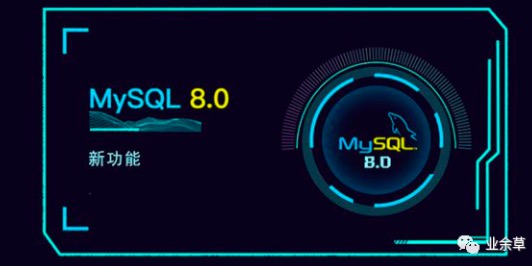本博客日IP超过2000,PV 3000 左右,急需赞助商。
极客时间所有课程通过我的二维码购买后返现24元微信红包,请加博主新的微信号:xttblog2,之前的微信号好友位已满,备注:返现
受密码保护的文章请关注“业余草”公众号,回复关键字“0”获得密码
所有面试题(java、前端、数据库、springboot等)一网打尽,请关注文末小程序

腾讯云】1核2G5M轻量应用服务器50元首年,高性价比,助您轻松上云
今天我们一起来聊聊 MySQL 8.x 版本中新增的三大索引。MySQL 8.x 中新增了三种索引方式,如下所示。
- 隐藏索引
- 降序索引
- 函数索引

一、隐藏索引
1.隐藏索引概述
- MySQL 8.0 开始支持隐藏索引(invisible index),不可见索引。
- 隐藏索引不会被优化器使用,但仍然需要进行维护。
- 应用场景:软删除、灰度发布。
在之前 MySQL 的版本中,只能通过显式的方式删除索引,如果删除后发现索引删错了,又只能通过创建索引的方式将删除的索引添加回来,如果数据库中的数据量非常大,或者表比较大,这种操作的成本非常高。在 MySQL 8.0 中,只需要将这个索引先设置为隐藏索引,使查询优化器不再使用这个索引,但是,此时这个索引还是需要 MySQL 后台进行维护,当确认将这个索引设置为隐藏索引系统不会受到影响时,再将索引彻底删除。这就是软删除功能。 灰度发布,就是说创建索引时,首先将索引设置为隐藏索引,通过修改查询优化器的开关,使隐藏索引对查询优化器可见,通过 explain 对索引进行测试,确认这个索引有效,某些查询可以使用到这个索引,就可以将其设置为可见索引,完成灰度发布的效果。
2.隐藏索引操作
(1)登录 MySQL,创建 testdb 数据库,并在数据库中创建一张测试表 t1
mysql> create database if not exists testdb;
Query OK, 1 row affected (0.58 sec)
mysql> use testdb;
Database changed
mysql> create table if not exists t1(i int, j int);
Query OK, 0 rows affected (0.05 sec) (2)在字段 i 上创建索引,如下所示。
mysql> create index i_idx on t1(i);
Query OK, 0 rows affected (0.34 sec)
Records: 0 Duplicates: 0 Warnings: 0 (3)在字段 j 上创建隐藏索引,创建隐藏索引时,只需要在创建索引的语句后面加上 invisible 关键字,如下所示
mysql> create index j_idx on t1(j) invisible;
Query OK, 0 rows affected (0.01 sec)
Records: 0 Duplicates: 0 Warnings: 0 (4)查看 t1 表中的索引情况,如下所示
mysql> show index from t1 \G
*************************** 1. row ***************************
Table: t1
Non_unique: 1
Key_name: i_idx
Seq_in_index: 1
Column_name: i
Collation: A
Cardinality: 0
Sub_part: NULL
Packed: NULL
Null: YES
Index_type: BTREE
Comment:
Index_comment:
Visible: YES
Expression: NULL
*************************** 2. row ***************************
Table: t1
Non_unique: 1
Key_name: j_idx
Seq_in_index: 1
Column_name: j
Collation: A
Cardinality: 0
Sub_part: NULL
Packed: NULL
Null: YES
Index_type: BTREE
Comment:
Index_comment:
Visible: NO
Expression: NULL
2 rows in set (0.02 sec) 可以看到 t1 表中有两个索引,一个是 i_idx,一个是 j_idx,i_idx 的 Visible 属性为 YES,表示这个索引可见; j_idx 的 Visibles 属性为 NO,表示这个索引不可见。
(5)查看查询优化器对这两个索引的使用情况。 首先,使用字段i进行查询,如下所示。
mysql> explain select * from t1 where i = 1 \G
*************************** 1. row ***************************
id: 1
select_type: SIMPLE
table: t1
partitions: NULL
type: ref
possible_keys: i_idx
key: i_idx
key_len: 5
ref: const
rows: 1
filtered: 100.00
Extra: NULL
1 row in set, 1 warning (0.02 sec)
可以看到,查询优化器会使用i字段的索引进行优化。
接下来,使用字段j进行查询,如下所示。
mysql> explain select * from t1 where j = 1 \G
*************************** 1. row ***************************
id: 1
select_type: SIMPLE
table: t1
partitions: NULL
type: ALL
possible_keys: NULL
key: NULL
key_len: NULL
ref: NULL
rows: 1
filtered: 100.00
Extra: Using where
1 row in set, 1 warning (0.00 sec) 可以看到,查询优化器并没有使用 j 字段上的隐藏索引,会使用全表扫描的方式查询数据。
(6)使隐藏索引对优化器可见在 MySQL 8.x 中提供了一种新的测试方式,可以通过优化器的一个开关来打开某个设置,使隐藏索引对查询优化器可见。 查看查询优化器的开关,如下所示。
mysql> select @@optimizer_switch \G
*************************** 1. row ***************************
@@optimizer_switch: index_merge=on,index_merge_union=on,index_merge_sort_union=on,index_merge_intersection=on,engine_condition_pushdown=on,index_condition_pushdown=on,mrr=on,mrr_cost_based=on,block_nested_loop=on,batched_key_access=off,materialization=on,semijoin=on,loosescan=on,firstmatch=on,duplicateweedout=on,subquery_materialization_cost_based=on,use_index_extensions=on,condition_fanout_filter=on,derived_merge=on,use_invisible_indexes=off,skip_scan=on,hash_join=on
1 row in set (0.00 sec) 这里,可以看到如下一个属性值:
use_invisible_indexes=off 表示优化器是否使用不可见索引,默认为 off 不使用。 接下来,在 MySQL 的会话级别使查询优化器使用不可见索引,如下所示。
mysql> set session optimizer_switch="use_invisible_indexes=on";
Query OK, 0 rows affected (0.00 sec) 接下来,再次查看查询优化器的开关设置,如下所示
mysql> select @@optimizer_switch \G
*************************** 1. row ***************************
@@optimizer_switch: index_merge=on,index_merge_union=on,index_merge_sort_union=on,index_merge_intersection=on,engine_condition_pushdown=on,index_condition_pushdown=on,mrr=on,mrr_cost_based=on,block_nested_loop=on,batched_key_access=off,materialization=on,semijoin=on,loosescan=on,firstmatch=on,duplicateweedout=on,subquery_materialization_cost_based=on,use_index_extensions=on,condition_fanout_filter=on,derived_merge=on,use_invisible_indexes=on,skip_scan=on,hash_join=on
1 row in set (0.00 sec) 此时,可以看到 use_invisible_indexes=on,说明隐藏索引对查询优化器可见了。
再次分析使用 t1 表的 j 字段查询数据,如下所示。
mysql> explain select * from t1 where j = 1 \G
*************************** 1. row ***************************
id: 1
select_type: SIMPLE
table: t1
partitions: NULL
type: ref
possible_keys: j_idx
key: j_idx
key_len: 5
ref: const
rows: 1
filtered: 100.00
Extra: NULL
1 row in set, 1 warning (0.00 sec) 可以看到,此时查询优化器使用j字段上的隐藏索引来优化查询了。
(7)设置索引的可见与不可见 将字段 j 上的隐藏索引设置为可见,如下所示。
mysql> alter table t1 alter index j_idx visible;
Query OK, 0 rows affected (0.01 sec)
Records: 0 Duplicates: 0 Warnings: 0 将字段 j 上的索引设置为不可见,如下所示。
mysql> alter table t1 alter index j_idx invisible;
Query OK, 0 rows affected (0.01 sec)
Records: 0 Duplicates: 0 Warnings: 0 (8)MySQL 中主键不能设置为不可见索引 值得注意的是:在 MySQL 中,主键是不可以设置为不可见的。 在 testdb 数据库中创建一张测试表 t2,如下所示。
mysql> create table t2(i int not null);
Query OK, 0 rows affected (0.01 sec) 接下来,在 t2 表中创建一个不可见主键,如下所示
mysql> alter table t2 add primary key pk_t2(i) invisible;
ERROR 3522 (HY000): A primary key index cannot be invisible 可以看到,此时 SQL 语句报错,主键不能被设置为不可见索引。
二、降序索引
1.降序索引概述
- MySQL 8.0 开始真正支持降序索引(descending index)。
- 只有 InnoDB 存储引擎支持降序索引,只支持BTREE降序索引。
- MySQL 8.0 不再对 GROUP BY 操作进行隐式排序
2.降序索引操作
(1)MySQL 5.7 中支持的语法 首先,在 MySQL 5.7 中创建测试数据库 testdb,在数据库 testdb 中创建测试表 t2,如下所示。
mysql> create database if not exists testdb;
Query OK, 0 rows affected (0.71 sec)
mysql> use testdb;
Database changed
mysql> create table if not exists t2(c1 int, c2 int, index idx1(c1 asc, c2 desc));
Query OK, 0 rows affected (0.71 sec) 其中,在 t2 表中创建了名为 idx1 的索引,索引中 c1 字段升序排序,c2 字段降序排序。
接下来,查看 t2 表的创建信息,如下所示
mysql> show create table t2 \G
*************************** 1. row ***************************
Table: t2
Create Table: CREATE TABLE `t2` (
`c1` int(11) DEFAULT NULL,
`c2` int(11) DEFAULT NULL,
KEY `idx1` (`c1`,`c2`)
) ENGINE=InnoDB DEFAULT CHARSET=utf8mb4
1 row in set (0.16 sec) 可以看到,MySQL 5.7 版本在创建表的信息中,没有字段 c1 和 c2 的排序信息,默认都是升序。
(2)MySQL 8.0 中支持的语法 在 MySQL 8.x 中同样创建 t2 表,如下所示
mysql> create table if not exists t2(c1 int, c2 int, index idx1(c1 asc, c2 desc));
Query OK, 0 rows affected, 1 warning (0.00 sec) 接下来,查看 t2 表的创建信息,如下所示
mysql> show create table t2 \G
*************************** 1. row ***************************
Table: t2
Create Table: CREATE TABLE `t2` (
`c1` int(11) DEFAULT NULL,
`c2` int(11) DEFAULT NULL,
KEY `idx1` (`c1`,`c2` DESC)
) ENGINE=InnoDB DEFAULT CHARSET=utf8mb4 COLLATE=utf8mb4_0900_ai_ci
1 row in set (0.00 sec) 可以看到,在 MySQL 8.x 中,创建的索引中存在字段的排序信息。
(3)MySQL 5.7 中查询优化器对索引的使用情况 首先,在表 t2 中插入一些数据,如下所示。
mysql> insert into t2(c1, c2) values(1, 100), (2, 200), (3, 150), (4, 50);
Query OK, 4 rows affected (0.19 sec)
Records: 4 Duplicates: 0 Warnings: 0 接下来,查询 t2 表中的数据,如下所示。
mysql> select * from t2;
+------+------+
| c1 | c2 |
+------+------+
| 1 | 100 |
| 2 | 200 |
| 3 | 150 |
| 4 | 50 |
+------+------+
4 rows in set (0.00 sec) 可以看到,t2 表中的数据插入成功。
接下来,查看查询优化器对索引的使用情况,这里,查询语句按照 c1 字段升序,按照 c2 字段降序,如下所示。
mysql> explain select * from t2 order by c1, c2 desc \G
*************************** 1. row ***************************
id: 1
select_type: SIMPLE
table: t2
partitions: NULL
type: index
possible_keys: NULL
key: idx1
key_len: 10
ref: NULL
rows: 4
filtered: 100.00
Extra: Using index; Using filesort
1 row in set, 1 warning (0.12 sec) 可以看到,在 MySQL 5.7 中,按照 c2 字段进行降序排序,并没有使用索引。
(4)MySQL 8.x 中查询优化器对降序索引的使用情况。 查看查询优化器对降序索引的使用情况。 首先,在表 t2 中插入一些数据,如下所示。
mysql> insert into t2(c1, c2) values(1, 100), (2, 200), (3, 150), (4, 50);
Query OK, 4 rows affected (0.00 sec)
Records: 4 Duplicates: 0 Warnings: 0 接下来,查询 t2 表中的数据,如下所示。
mysql> select * from t2;
+------+------+
| c1 | c2 |
+------+------+
| 1 | 100 |
| 2 | 200 |
| 3 | 150 |
| 4 | 50 |
+------+------+
4 rows in set (0.00 sec) 可以看到,t2 表中的数据插入成功。
在 MySQL 中如果创建的是升序索引,则指定查询的时候,只能按照升序索引的方式指定查询,这样才能使用升序索引。
接下来,查看查询优化器对索引的使用情况,这里,查询语句按照 c1 字段升序,按照 c2 字段降序,如下所示。
mysql> explain select * from t2 order by c1, c2 desc \G
*************************** 1. row ***************************
id: 1
select_type: SIMPLE
table: t2
partitions: NULL
type: index
possible_keys: NULL
key: idx1
key_len: 10
ref: NULL
rows: 4
filtered: 100.00
Extra: Using index
1 row in set, 1 warning (0.00 sec) 可以看到,在 MySQL 8.x 中,按照 c2 字段进行降序排序,使用了索引。
使用 c1 字段降序,c2 字段升序排序,如下所示。
mysql> explain select * from t2 order by c1 desc, c2 \G
*************************** 1. row ***************************
id: 1
select_type: SIMPLE
table: t2
partitions: NULL
type: index
possible_keys: NULL
key: idx1
key_len: 10
ref: NULL
rows: 4
filtered: 100.00
Extra: Backward index scan; Using index
1 row in set, 1 warning (0.00 sec) 可以看到,在 MySQL 8.x 中仍然可以使用索引,并使用了索引的反向扫描。
(5)MySQL 8.x 中不再对 GROUP BY 进行隐式排序
在 MySQL 5.7 中执行如下命令,按照 c2 字段进行分组,查询每组中数据的记录条数。
mysql> select count(*), c2 from t2 group by c2;
+----------+------+
| count(*) | c2 |
+----------+------+
| 1 | 50 |
| 1 | 100 |
| 1 | 150 |
| 1 | 200 |
+----------+------+
4 rows in set (0.18 sec) 可以看到,在 MySQL 5.7 中,在 c2 字段上进行了排序操作。
在 MySQL 8.x 中执行如下命令,按照 c2 字段进行分组,查询每组中数据的记录条数。
mysql> select count(*), c2 from t2 group by c2;
+----------+------+
| count(*) | c2 |
+----------+------+
| 1 | 100 |
| 1 | 200 |
| 1 | 150 |
| 1 | 50 |
+----------+------+
4 rows in set (0.00 sec) 可以看到,在 MySQL 8.x 中,在 c2 字段上并没有进行排序操作。
在 MySQL 8.x 中如果需要对 c2 字段进行排序,则需要使用 order by 语句明确指定排序规则,如下所示。
mysql> select count(*), c2 from t2 group by c2 order by c2;
+----------+------+
| count(*) | c2 |
+----------+------+
| 1 | 50 |
| 1 | 100 |
| 1 | 150 |
| 1 | 200 |
+----------+------+
4 rows in set (0.00 sec) 三、函数索引
1.函数索引概述
- MySQL 8.0.13 开始支持在索引中使用函数(表达式)的值。
- 支持降序索引,支持 JSON 数据的索引
- 函数索引基于虚拟列功能实现
2.函数索引操作
(1)创建测试表 t3 在 testdb 数据库中创建一张测试表 t3,如下所示。
mysql> create table if not exists t3(c1 varchar(10), c2 varchar(10));
Query OK, 0 rows affected (0.01 sec) (2)创建普通索引,在 c1 字段上创建普通索引
mysql> create index idx1 on t3(c1);
Query OK, 0 rows affected (0.01 sec)
Records: 0 Duplicates: 0 Warnings: 0 (3)创建函数索引 在 c2 字段上创建一个将字段值转化为大写的函数索引,如下所示。
mysql> create index func_index on t3 ((UPPER(c2)));
Query OK, 0 rows affected (0.02 sec)
Records: 0 Duplicates: 0 Warnings: 0 (4)查看 t3 表上的索引信息,如下所示。
mysql> show index from t3 \G
*************************** 1. row ***************************
Table: t3
Non_unique: 1
Key_name: idx1
Seq_in_index: 1
Column_name: c1
Collation: A
Cardinality: 0
Sub_part: NULL
Packed: NULL
Null: YES
Index_type: BTREE
Comment:
Index_comment:
Visible: YES
Expression: NULL
*************************** 2. row ***************************
Table: t3
Non_unique: 1
Key_name: func_index
Seq_in_index: 1
Column_name: NULL
Collation: A
Cardinality: 0
Sub_part: NULL
Packed: NULL
Null: YES
Index_type: BTREE
Comment:
Index_comment:
Visible: YES
Expression: upper(`c2`)
2 rows in set (0.01 sec) (5)查看查询优化器对两个索引的使用情况。首先,查看 c1 字段的大写值是否等于某个特定的值,如下所示。
mysql> explain select * from t3 where upper(c1) = 'ABC' \G
*************************** 1. row ***************************
id: 1
select_type: SIMPLE
table: t3
partitions: NULL
type: ALL
possible_keys: NULL
key: NULL
key_len: NULL
ref: NULL
rows: 1
filtered: 100.00
Extra: Using where
1 row in set, 1 warning (0.00 sec) 可以看到,没有使用索引,进行了全表扫描操作。
接下来,查看 c2 字段的大写值是否等于某个特定的值,如下所示。
mysql> explain select * from t3 where upper(c2) = 'ABC' \G
*************************** 1. row ***************************
id: 1
select_type: SIMPLE
table: t3
partitions: NULL
type: ref
possible_keys: func_index
key: func_index
key_len: 43
ref: const
rows: 1
filtered: 100.00
Extra: NULL
1 row in set, 1 warning (0.00 sec) 可以看到,使用了函数索引。
(6)函数索引对 JSON 数据的索引 首先,创建测试表 emp,并对 JSON 数据进行索引,如下所示。
mysql> create table if not exists emp(data json, index((CAST(data->>'$.name' as char(30)))));
Query OK, 0 rows affected (0.02 sec) 上述 SQL 语句的解释如下:
- JSON 数据长度不固定,如果直接对 JSON 数据进行索引,可能会超出索引长度,通常,会只截取 JSON 数据的一部分进行索引。
- CAST() 类型转换函数,把数据转化为 char(30) 类型。使用方式为 CAST(数据 as 数据类型)。
- data ->> ‘$.name’ 表示 JSON 的运算符
简单的理解为,就是取 name 节点的值,将其转化为 char(30) 类型。
接下来,查看 emp 表中的索引情况,如下所示。
mysql> show index from emp \G
*************************** 1. row ***************************
Table: emp
Non_unique: 1
Key_name: functional_index
Seq_in_index: 1
Column_name: NULL
Collation: A
Cardinality: 0
Sub_part: NULL
Packed: NULL
Null: YES
Index_type: BTREE
Comment:
Index_comment:
Visible: YES
Expression: cast(json_unquote(json_extract(`data`,_utf8mb4\'$.name\')) as char(30) charset utf8mb4)
1 row in set (0.00 sec) (7)函数索引基于虚拟列实现 首先,查看 t3 表的信息,如下所示。
mysql> desc t3;
+-------+-------------+------+-----+---------+-------+
| Field | Type | Null | Key | Default | Extra |
+-------+-------------+------+-----+---------+-------+
| c1 | varchar(10) | YES | MUL | NULL | |
| c2 | varchar(10) | YES | | NULL | |
+-------+-------------+------+-----+---------+-------+
2 rows in set (0.00 sec)
在 c1 上建立了普通索引,在 c2 上建立了函数索引。
接下来,在 t3 表中添加一列 c3,模拟 c2 上的函数索引,如下所示。
mysql> alter table t3 add column c3 varchar(10) generated always as (upper(c1));
Query OK, 0 rows affected (0.03 sec)
Records: 0 Duplicates: 0 Warnings: 0 c3 列是一个计算列,c3 字段的值总是使用 c1 字段转化为大写的结果。
接下来,向 t3 表中插入一条数据,其中,c3 列是一个计算列,c3 字段的值总是使用 c1 字段转化为大写的结果,在插入数据的时候,不需要为 c3 列插入数据,如下所示。
mysql> insert into t3(c1, c2) values ('abc', 'def');
Query OK, 1 row affected (0.00 sec)
查询 t3 表中的数据,如下所示。
mysql> select * from t3;
+------+------+------+
| c1 | c2 | c3 |
+------+------+------+
| abc | def | ABC |
+------+------+------+
1 row in set (0.00 sec) 可以看到,并不需要向 c3 列中插入数据,c3 列的数据为 c1 字段的大写结果数据。
如果想模拟函数索引的效果,则可以使用如下方式。首先,在 c3 列上添加索引,如下所示。
mysql> create index idx3 on t3(c3);
Query OK, 0 rows affected (0.11 sec)
Records: 0 Duplicates: 0 Warnings: 0 接下来,再次查看 c1 字段的大写值是否等于某个特定的值,如下所示。
mysql> explain select * from t3 where upper(c1) = 'ABC' \G
*************************** 1. row ***************************
id: 1
select_type: SIMPLE
table: t3
partitions: NULL
type: ref
possible_keys: idx3
key: idx3
key_len: 43
ref: const
rows: 1
filtered: 100.00
Extra: NULL
1 row in set, 1 warning (0.00 sec) 此时,就使用了 idx3 索引。

最后,欢迎关注我的个人微信公众号:业余草(yyucao)!可加作者微信号:xttblog2。备注:“1”,添加博主微信拉你进微信群。备注错误不会同意好友申请。再次感谢您的关注!后续有精彩内容会第一时间发给您!原创文章投稿请发送至532009913@qq.com邮箱。商务合作也可添加作者微信进行联系!
本文原文出处:业余草: » MySQL8中新增了三大索引,隐藏索引、降序索引、函数索引
